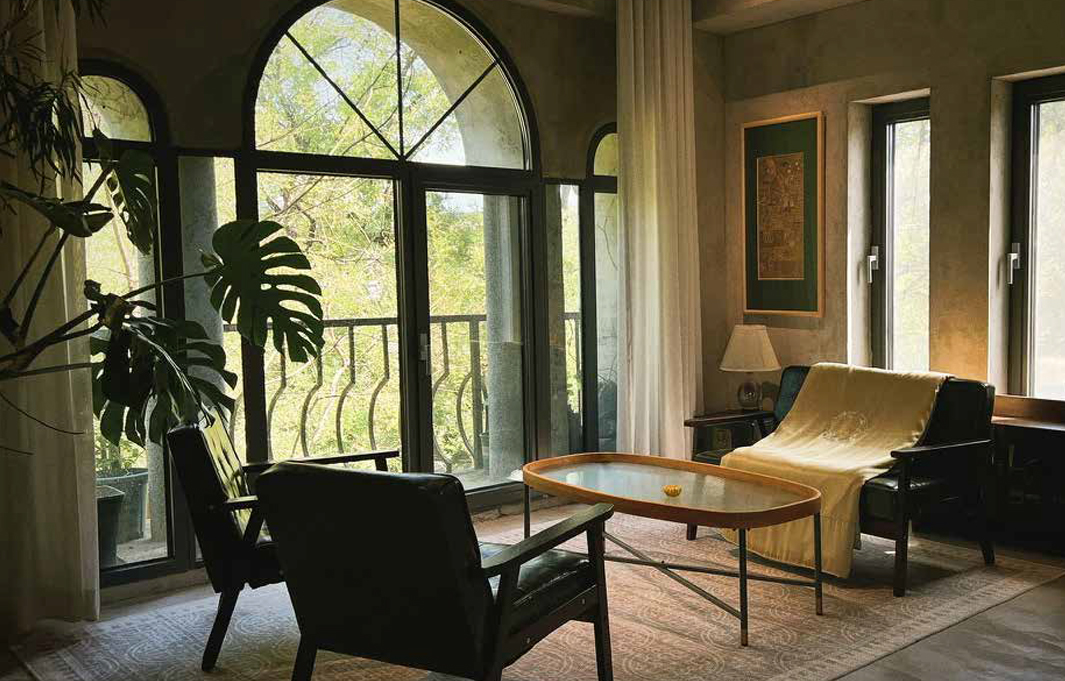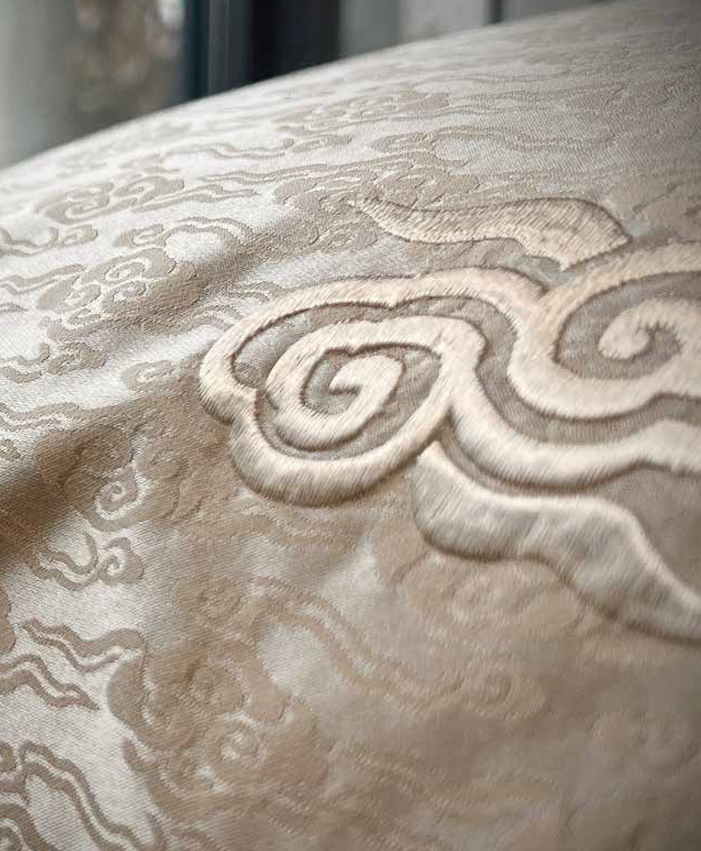FAMILY HEIRLOOM DECORATION
"Heritage Patterns" is a family cultural inheritance system developed by Lu'an Prefecture, built upon six centuries of Lu silk craftsmanship. By extracting symbolic elements from a family's historical memories and transforming them through modern design language, it creates a unique pattern system. Using Lu silk—an intangible cultural heritage—as its medium, the platform constructs a complete expressive system that spans from family spiritual symbols to daily aesthetic living. At its core, it makes family heritage visible, tangible, and sustainable, forming a cultural inheritance model characterized by "one name, one pattern" and "one clan, one legacy."


During a research trip to Lianghu Village in Jincheng, a Lu silk designer was captivated by the window stone of an old Qing Dynasty house—the relief of auspicious clouds on the bluestone, weathered by centuries, still radiated the vitality once carved by the artisan. The homeowner explained: "My ancestors carved this for protection and blessings, with the cloud heads facing east, longing for wanderers to return."
The designer preserved the pattern through rubbing, then reinterpreted it using Lu silk’s “inch-brocade” technique: simplifying the cloud motifs into geometric ripples, embedding the family surname in seal script within the cloud heads, and adorning the edges with the "∞" symbol representing intergenerational continuity. Local villagers were invited to participate in the dyeing process, using mineral pigments from the Taihang Mountains to restore the original hue of the bluestone.
The first set of "Returning Cloud" family emblem scarves was collected by descendants of Shanxi merchants overseas, sparking a wave of "root-seeking customization." Lianghu Village subsequently established an intangible cultural heritage workshop, where elder artisans mentor apprentices in reproducing ancient architectural patterns, while young designers use digital technology to revitalize traditions—a single stone thus connects family memory to the lifeblood of rural revitalization. By reconstructing endangered architectural motifs through heritage craftsmanship, this initiative provides a cultural anchor for dispersed families while restoring economic vitality to ancient village skills—truly enabling "old patterns to sustain new artisans."





